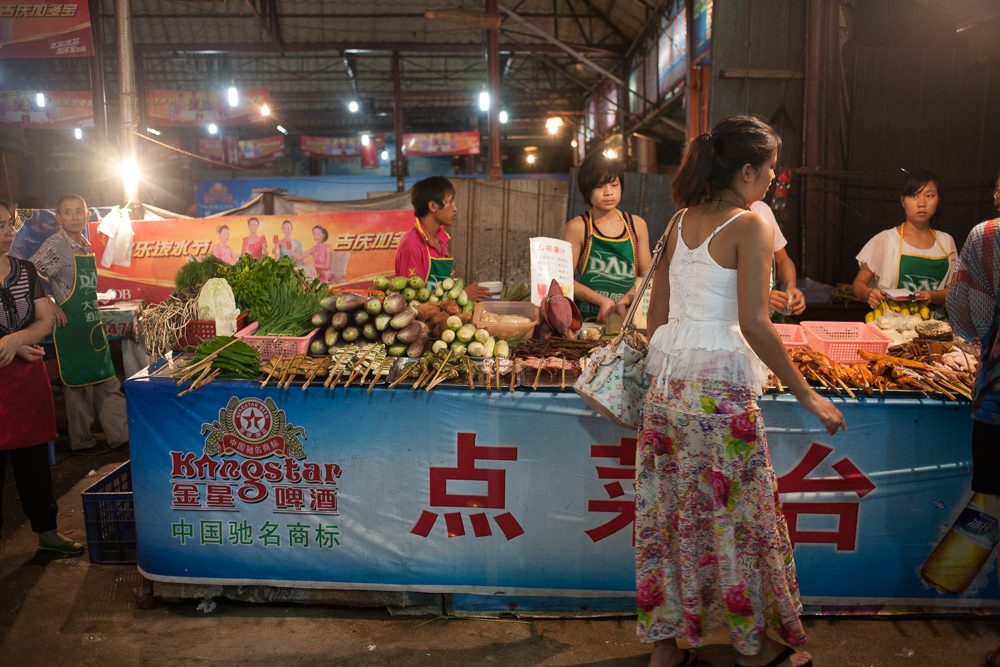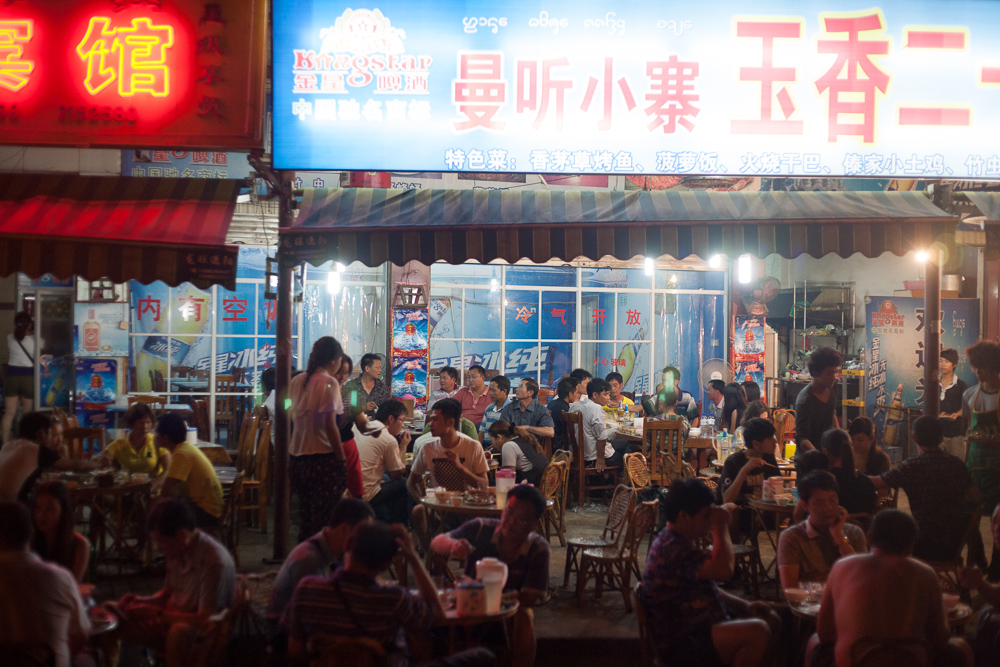The Shaokao Ritual—Yunnan-Style Barbecue
June 2nd, 2014

Every evening, as the sun sets in towns and cities all across China, the grill cooks take their places. On street corners, in parking lots, and next to tiny shops, they prepare their wood, their charcoal briquettes, or their propane-powered grills and lay out their ingredients. Thin skewers are threaded with rows of aromatic green onions, squares of dense pressed tofu, small round fish balls, waxy slices of potato, meaty mushrooms, strips of pork, mutton, and beef, and all kinds of other delicious foods. At first, the customers come in a trickle, a few families with kids stopping by for an easy dinner eaten on low folding tables or carried home in styrofoam containers tied up in small plastic bags. But as the sky darkens and the regular restaurants wind down for the night, things get busy. Groups of twenty-somethings drop by on their way home from clubs. Taxi drivers pull over for a mid-shift snack. Businessmen make their way to the grills and order a second dinner to soak up all the baijiu and beer in their stomachs.

Pressed, deep-fried tofu and fresh, herb-and-chile-stuffed tofu ready for the grill in Jinghong, Xishuangbanna

Fish stuffed with herbs, a Dai shaokao specialty, in Xishuangbanna
This is shāokǎo (烧烤), Chinese-style barbecue. Its flavors and cooking methods vary as you move across China, but the basic elements remain the same. In some places, like on street corners in Chengdu, cooks use enormous grills five feet long and almost three feet wide; in other places, grills are very narrow—just wide enough to accommodate the meat and vegetables on the skewers with the bare parts of the skewers sticking out on either side. (In Beijing, the city has just issued a ban on outdoor shaokao grills, banishing that city’s iconic short, narrow grills, which were often built into the outer walls of shops and restaurants, into indoor kitchens.)

A table full of shaokao ingredients in Jinghong, Xishuangbanna
Yunnan is home to a few different versions of shaokao. In the early fall, when chiles are harvested, Bai families around Shaxi smear meat and fish and potatoes with fresh chile paste and grill it for an extremely fiery meal. In Xishuangbanna, shao kaocooks grill up Dai specialties, like fish stuffed with herbs, and the most popular spots are next to little kitchens where cooks also prepare cold salads of herbs or small Thai eggplants.

Ingredients for shaokao and side dished at one popular spot in Xishuangbanna
Our favorite shaokao in Yunnan comes from a cook with a little hole-in-the-wall restaurant in the mouth of the little alleyway at the end of Luofeng Jie. There, a thin, wiry cook with an accent so thick we can hardly understand a word he says, cooks up skewers of meat, fish balls, tofu, mushrooms, and sliced lotus root, then douses everything with a complicated mix of chile and spices that combine the cumin and chile popular in northern Chinese shaokao with the numbing Sichuan peppercorn and citrusy black cardamom that define much of the cooking in central Yunnan. It’s the perfect food for a hot summer night, just spicy enough to make you sweat and to inspire you to have an extra bottle of weak Chinese beer.

Late-night shaokao in Xishuangbanna
Photos: Josh Wand (6)



